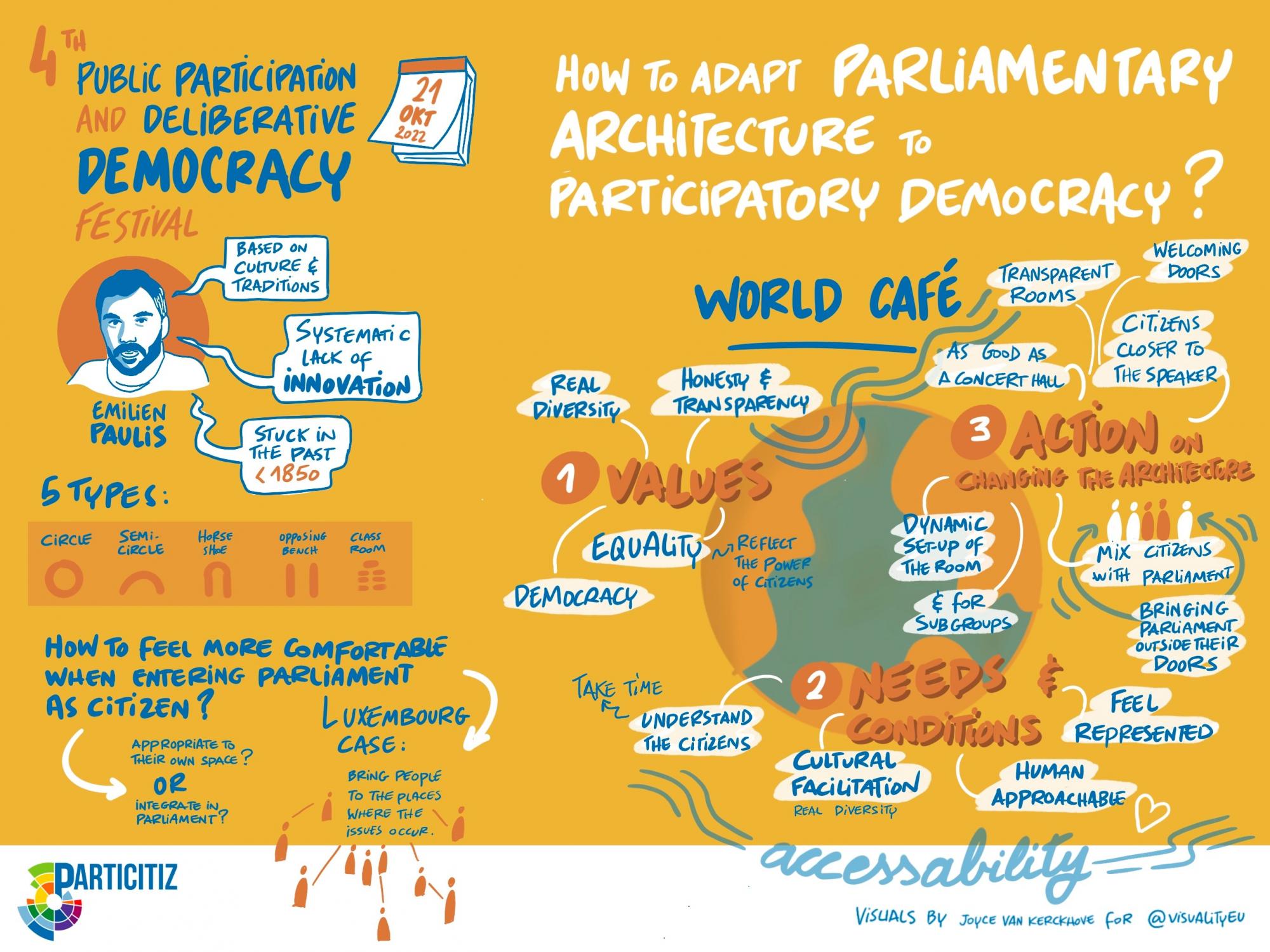How to adapt parliamentary architecture to participatory democracy?
Inspired by the exhibition "Living in Democracy. The architecture of parliaments" organized for the 30th anniversary of the Brussels Parliament in 2019, the session invited participants to reflect on the architecture of parliaments and their spaces and the extent to which they were adequate for citizen participation.
The session began with an interview with Emilien Paulis, who presented the different ways parliaments around the world are organized. He then spoke about the "deliberative wave" that emerged a few years ago and the fact that it has had the effect of pushing parliaments to open their doors to citizens by organizing more and more participatory events within them.
This had the effect of highlighting that parliaments were not always able to fully integrate citizens into the participatory and deliberative processes they set up.
Indeed, parliaments remain the same while societies have changed significantly. They have not explored innovations that accommodate important social, economic, and technological transformations. Moreover, they have not adapted their structures and organization to the increasing demand for more citizen involvement. If some procedural evolution has been observed regarding direct democracy (petitioning, initiatives, referendums), it remains less the case regarding deliberative democracy. Among these necessary changes, the spaces of the parliaments are part of it.
The second part of this workshop was a world-café that invited participants to reflect together on how the architecture and spaces of parliaments could be adapted but also on what other elements and challenges should parliaments take into account when inviting citizens to participate in a deliberative process.
The different issues discussed during the world café were the following:
- How can parliaments become ‘living centres of democracy’ again? What values should they reflect and how can these be translated in the architecture?
- Deliberative democracy bringing in a much bigger diversity of citizens into the parliament, what would be needed in order to enhance a genuine encounter and exchange between those diverse groups ?
- How would you redesign the architecture and the spaces of a parliament to foster citizen participation and deliberation in a place that is designed for decision making, voting and enactment of laws ?
These three questions led to very rich and interesting exchanges. Several participants took the floor at the end of the session to present their thoughts and Joyce Van Kerckhove was able to collect all this information and represent it in a visual way in the drawing that you can find in this post.

